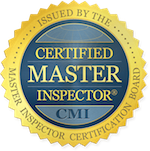Blogs
Asbestos
I was recently performing a home inspection in Raleigh and located an old furnace that was lined with asbestos. The buyers were very concerned, as most would be. Since I am frequently asked about Asbestos during home inspections. I decided to provide some information on my blog.
Where Can I Find Asbestos and When Can it Be a Problem?
Most products made today do not contain asbestos. Those few products made which still contain asbestos that could be inhaled are required to be labeled as such. However, until the 1970s, many types of building products and insulation materials used in homes contained asbestos. Common products that might have contained asbestos in the past, and conditions which may release fibers, include:
steam pipes, boilers and furnace ducts insulated with an asbestos blanket or asbestos paper tape. These materials may release asbestos fibers if damaged, repaired, or removed improperly;
resilient floor tiles (vinyl asbestos, asphalt and rubber), the backing on vinyl sheet flooring, and adhesives used for installing floor tile. Sanding tiles can release fibers, and so may scraping or sanding the backing of sheet flooring during removal;
cement sheet, millboard and paper used as insulation around furnaces and wood-burning stoves. Repairing or removing appliances may release asbestos fibers, and so may cutting, tearing, sanding, drilling, or sawing insulation;
door gaskets in furnaces, wood stoves and coal stoves. Worn seals can release asbestos fibers during use;
soundproofing or decorative material sprayed on walls and ceilings. Loose, crumbly or water-damaged material may release fibers, and so will sanding, drilling or scraping the material;
patching and joint compounds for walls and ceilings, and textured paints. Sanding, scraping, or drilling these surfaces may release asbestos fibers;
asbestos cement roofing, shingles and siding. These products are not likely to release asbestos fibers unless sawed, dilled or cut;
artificial ashes and embers sold for use in gas-fired fireplaces, and other older household products, such as fireproof gloves, stove-top pads, ironing board covers and certain hairdryers; and automobile brake pads and linings, clutch facings and gaskets.
Where Asbestos Hazards May Be Found in the Home
Some roofing and siding shingles are made of asbestos cement.
Houses built between 1930 and 1950 may have asbestos as insulation.
Asbestos may be present in textured paint and in patching compounds used on wall and ceiling joints. Their use was banned in 1977.
Artificial ashes and embers sold for use in gas-fired fireplaces may contain asbestos.
Older products, such as stove-top pads, may have some asbestos compounds.
Walls and floors around wood-burning stoves may be protected with asbestos paper, millboard or cement sheets.
Asbestos is found in some vinyl floor tiles and the backing on vinyl sheet flooring and adhesives.
Hot water and steam pipes in older houses may be coated with an asbestos material or covered with an asbestos blanket or tape.
Oil and coal furnaces and door gaskets may have asbestos insulation.
For more information please visit the EPA site on Asbestos



